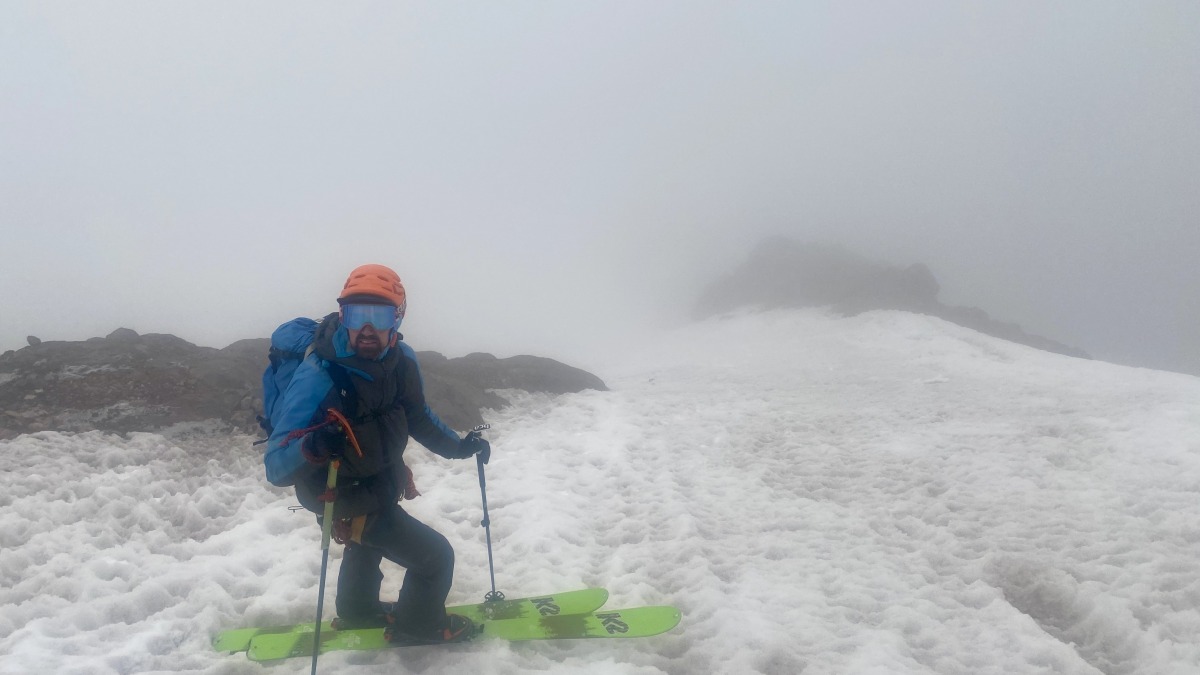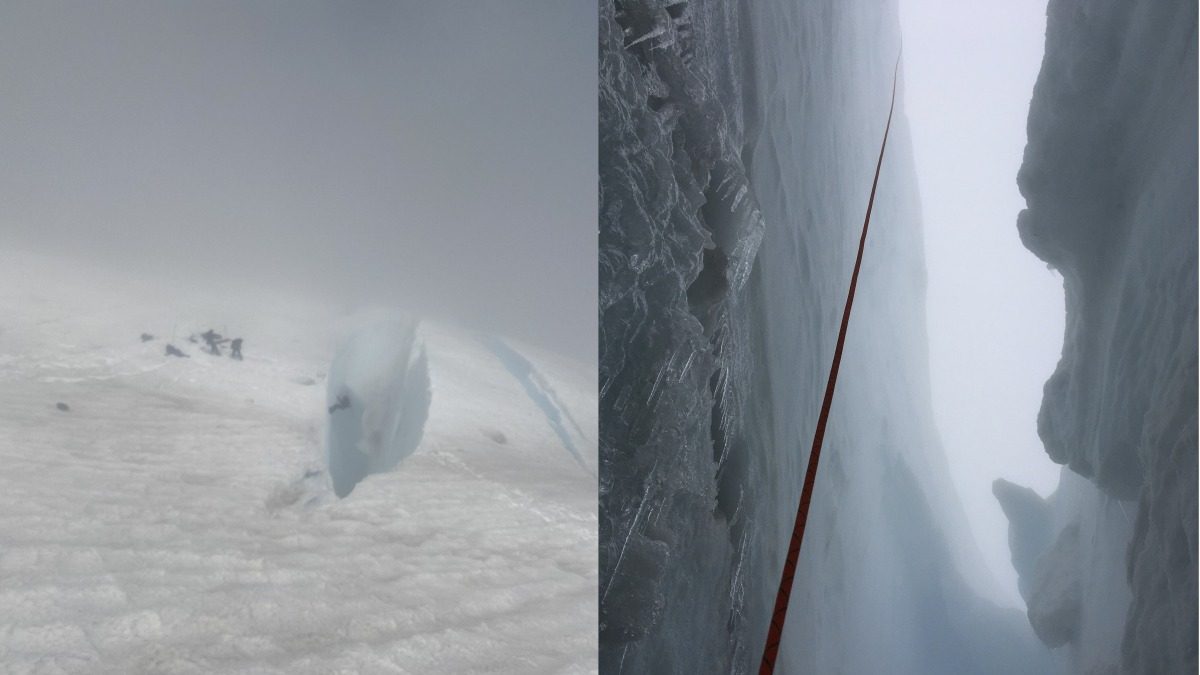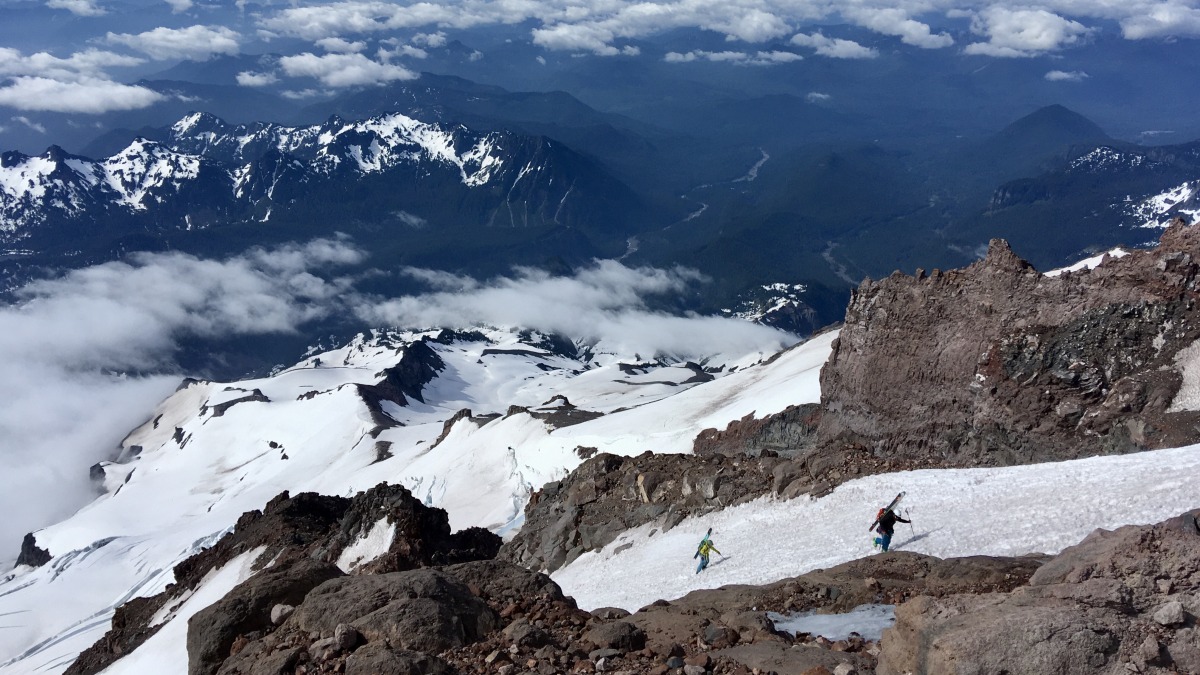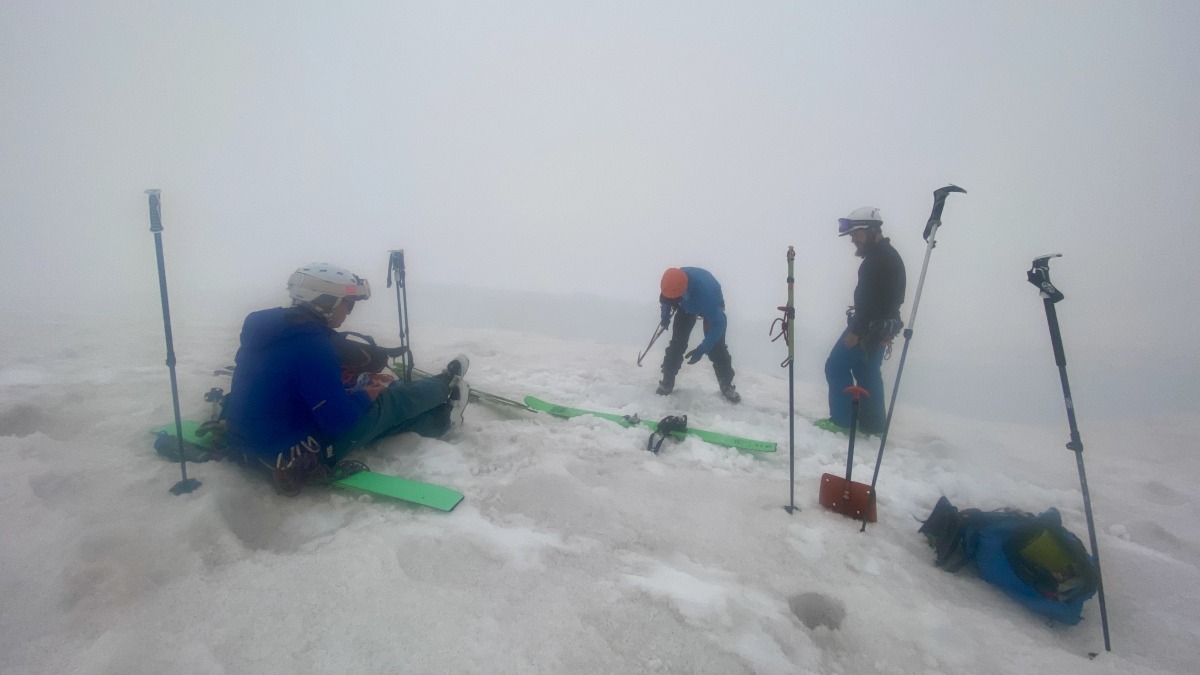Lessons learned from a successful ski-crevasse rescue
I never thought I would be the person who could say “Oh crap! I lost my ski to a crevasse.” Probably not the story I will be telling my grandma anytime soon…
A few weeks ago, Louie, Connor, Kristen and I were skiing on Mount Rainier. The weather was moody that day, with clouds rolling in and out in the afternoon. As we were descending, the clouds rolled in extra thick; we decided to stop to have a snack and wait for them to clear. I was so excited for the full size avocado I had in my pack that I thought I was about to consume with pure joy.
My spring ski setup does not have brakes; I opt for leashes instead. There are a few personal justifications of why I choose to ski without brakes in the spring: It’s easier to attach skis to pack for long ski carries (very common for PNW spring skiing), lighter weight, less to worry about during transitions.
On this particular day, I followed my routine of taking my ski off, then unclipping the leash off my boot as I was holding the ski with my other hand to flip it over to sit on. I am not quite sure what happened this time, but as I removed my leash, the ski got away from me, pivoted and started racing downhill. At first the movement was slow, but I was surprised how quickly it accelerated even on a mostly flat glacier terrain. There was a small crack maybe 20 feet away, which prevented me from attempting the classic “let’s try and dive for the ski to save it.” My ski proceeded to gain speed and disappear into a rather enormous crevasse about 150 feet below us.
At this moment I was feeling pretty stupid. We were still a good 3500 feet above the end of our run. I knew that if the ski couldn’t be retrieved, I’d have to ski on one ski or walk all that elevation. I wasn’t feeling stoked about that, and I knew that the chances of getting my ski back were slim.
The group gave me a few minutes to collect my thoughts as I profusely apologized for the extra adventure I had just introduced. We walked over to the crevasse and set up an anchor to get a look over the edge. We used a deadman and a back up with an ice axe. The clouds continued to stay pretty thick, which was not helping the situation.

The clouds rolled in so quick, we retreated from our original plan to ski down. Louie at the top of the Fuhrer Finger.
Louie volunteered to be the one to look down into the crevasse. He clipped into the anchor and approached the edge. All I heard when he got to the edge was: “Oh wow, this thing is huuuge!” At a first glance, he thought the crevasse was over 60m deep. I had lost all hope and was ready to start walking downhill. However, since we were a party of four and had two 30 meter ropes on us, we decided that we would drop one rope into the crevasse attached to the anchor and then have someone check to see if that would give a bit more of contrast to gauge how deep the crevasse really was. Thankfully there was a solid bridge just to our right to easily walk over to the other side.
The edge where we had originally set up the anchor was a bit overhung, so we dropped the end of the rope on that side and Louie watched the rope as it dropped from the other side. At this point, Louie thought he could vaguely see the ski. I wasn’t too hopeful though.
After a discussion regarding risks of going down into the crevasse to try and retrieve the ski, our group had a plan. We would lower Louie into the crevasse to find the ski and then haul him out. We bought radios with us (we now do this on almost every tour) which helped the situation greatly. Louie had let us know when he reached the bottom and after a few minutes he HAD MY SKI. I couldn’t believe it, I may have done a happy dance. We were aware that he was pretty much the full rope length down, which meant we were now set to haul him out of a ~30 meter deep crevasse.
Kristen, Connor and myself set up a three to one system to pull Louie out. We weren’t sure how long the hauling would take, as all of us have only practiced hauling someone for maybe 20 feet in our glacier rescue classes or during practice set ups at home (i.e. our deck). Surprisingly, with a 3:1 system and three people, the hauling took less than 10 minutes. With permission from Connor and Kristen, I walked over to the other side of the crevasse to snap a photo for the last two rounds of hauling.

Left: Louie being hauled out by Kristen and Connor. I was permitted to step away to take this fairly epic shot from a safe snow bridge uphill from the crevasse. The weather was obviously still rough. The crevasse is bigger than it looks! Right: The view from the inside the crevasse.
We inspected my ski, which fell about 100 feet, and thankfully it was in perfect shape. I still couldn’t believe that I would get to descend with both skis; I was fully prepared to have a forever slog out. The clouds never did clear, but we were able to descend with no other shenanigans and enjoy some pretty fun skiing.
At first, I was really embarrassed to tell this story. I consider myself to be a person who is dialed in a mountain setting, so admitting that I let my ski get away from me seemed like I could basically label myself a “hot-mess”. The more I thought about it, the more I realized that these sorts of things could happen to anyone, no matter how dialed you may think you are. Sharing experiences like these is important and could teach others some valuable lessons.
Here are the lessons I have taken away from this. I hope you can find them useful if something like this ever happens to you or someone in your group.
— Do not try to jump and catch the object that may be getting away from you. You doing that may cause more harm to you then simply losing an object.
— Be careful not to rush to explore what has happened to the fallen object once it gets out of sight. Since you are focused on getting it back, you may not notice other hazards around you.
— In our case, we didn’t hurry to see if we could get the ski, we slowly approached the area, set up an anchor, and double checked everything
— Have a back up plan. What happens if you can’t get the object back? Are you capable of getting down safely?
— Travel with a group who has appropriate training that you trust to be able to help in a rescue situation.
— Carry radios, they are very helpful during skiing as well as for incidents like this.
If you ski on glaciated terrain, I hope you never have to watch your ski (or anything or anyone else) fall into a crevasse, but no matter what you should make sure you are ready to perform a rescue. For us this ended up being a great practice day, and I am thankful I have capable partners to recreate in the mountain with.
WildSnow Girl, Julia Dubinina, is a weekend warrior chasing snow in winter and sun in summer. A lover of long tours and steep skin tracks, she explores the Pacific Northwest and beyond. When she is not out adventuring, she is working away at her corporate desk job for a software company to make her next adventure happen.


